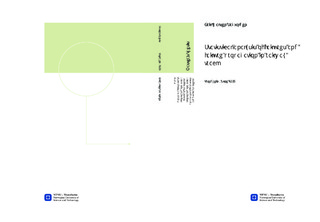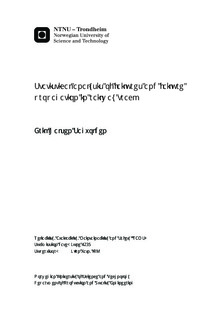| dc.contributor.advisor | Vatn, Jørn | nb_NO |
| dc.contributor.author | Sagvolden, Erik Halsen | nb_NO |
| dc.date.accessioned | 2014-12-19T12:21:06Z | |
| dc.date.available | 2014-12-19T12:21:06Z | |
| dc.date.created | 2013-09-16 | nb_NO |
| dc.date.issued | 2013 | nb_NO |
| dc.identifier | 648689 | nb_NO |
| dc.identifier | ntnudaim:9292 | nb_NO |
| dc.identifier.uri | http://hdl.handle.net/11250/240912 | |
| dc.description.abstract | The Norwegian Railway Administration (JBV) uses a measuring car to measure track performance. From a safety point of view, special attention needs to be paid to spots on the line where failure propagation is out of control, and critical failures could develop in between measurements typicallycarried out twice a year. A challenge in the modelling is that we are dealing with so-called line objects, where there are an almost infinite number of places a failure can occur. This is complicated by the fact that the measuring car reports the position of failures with some uncertainty, making it difficult to compare results across different measurements series.This report presents the result of an analysis of propagation of spot failures on track geometry. The analysis is based on ten inspections performed on the railway line between Eidsvoll and Hamar in the period 2006 to 2012. The data for the analysis is obtained from JBV's databases. Follow up of track performance is regulated by laws and regulations. JBV uses maintenance and renewal to improve track performance.To analyse deterioration of the track performance it is applied statistical methods. There exist several methods that deals with trend modelling, and a literature survey is performed to cover relevant methods for this project.Because of uncertainties in the obtained data a comprehensive work is performed to format data. This is done to understand what is included in the data and how the data can be used to analyse track performance. Two important parts of this work are to adjust the position of measurements and use the measurements to create time series for individual spots on the line.The adapted statistical methods are used to analyse the time series. The result of the analysis is a model that can predict the probability of failure development. The accuracy of the model is related to the accuracy of the obtained data and the methods used in the analysis. The intention of this model is to adapt inspection intervals and maintenance strategies that can reduce the probability of critical failures. This may in addition be used to increase safety on the railway.The accuracy of future data series can be considerably improved by using a better system to accurately position the location of measurements. This is also in accordance with plans in JBV to implement GPS as part of the measurements. | nb_NO |
| dc.language | eng | nb_NO |
| dc.publisher | Institutt for produksjons- og kvalitetsteknikk | nb_NO |
| dc.title | Statistical analysis of failures and failure propagation in railway track | nb_NO |
| dc.type | Master thesis | nb_NO |
| dc.source.pagenumber | 81 | nb_NO |
| dc.contributor.department | Norges teknisk-naturvitenskapelige universitet, Fakultet for ingeniørvitenskap og teknologi, Institutt for produksjons- og kvalitetsteknikk | nb_NO |

